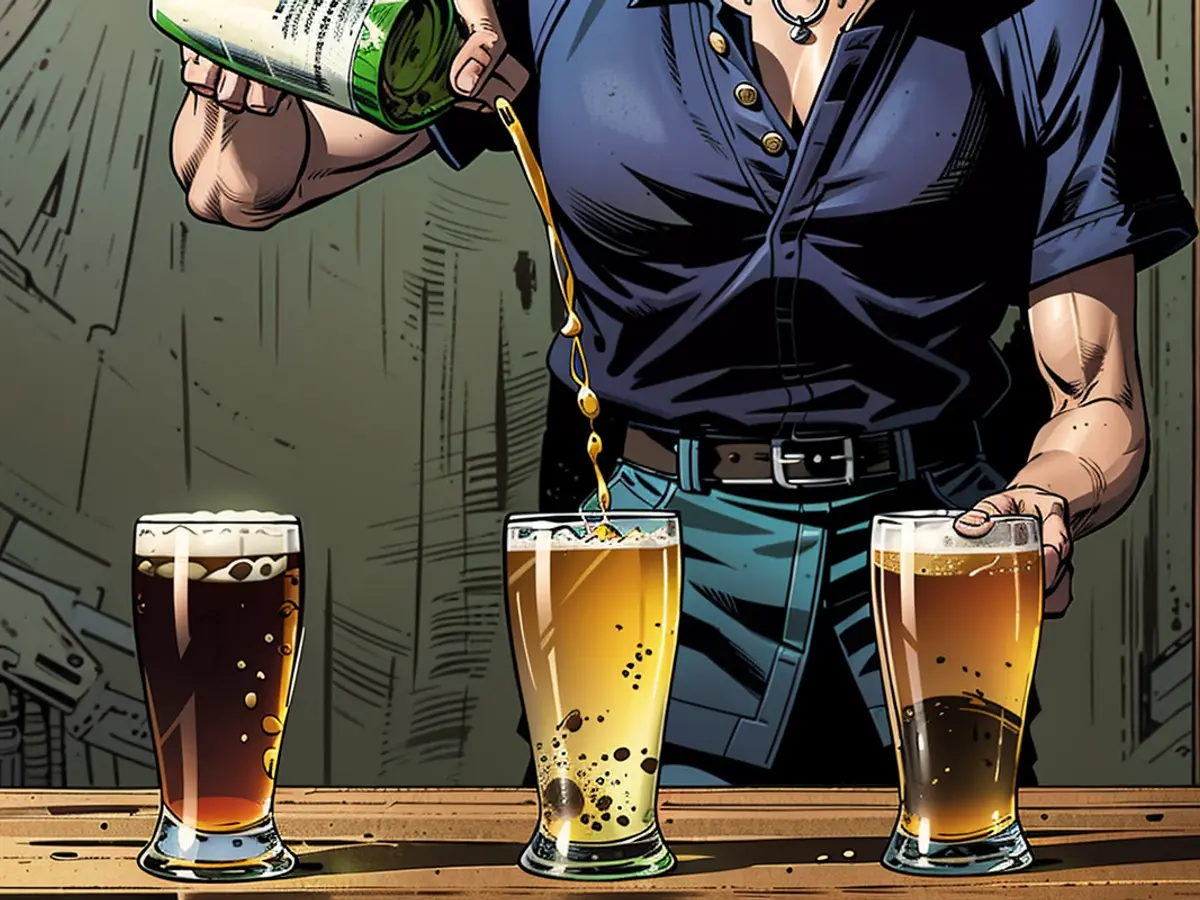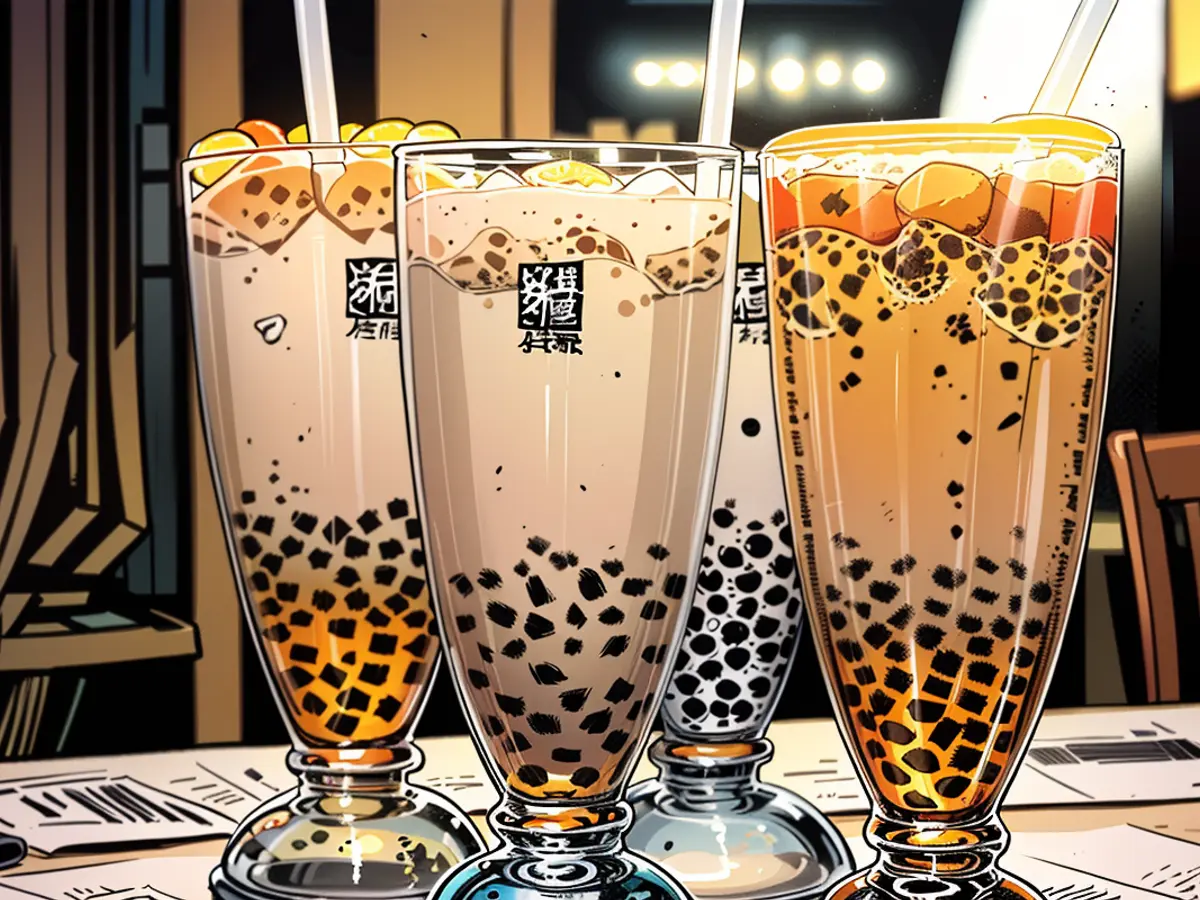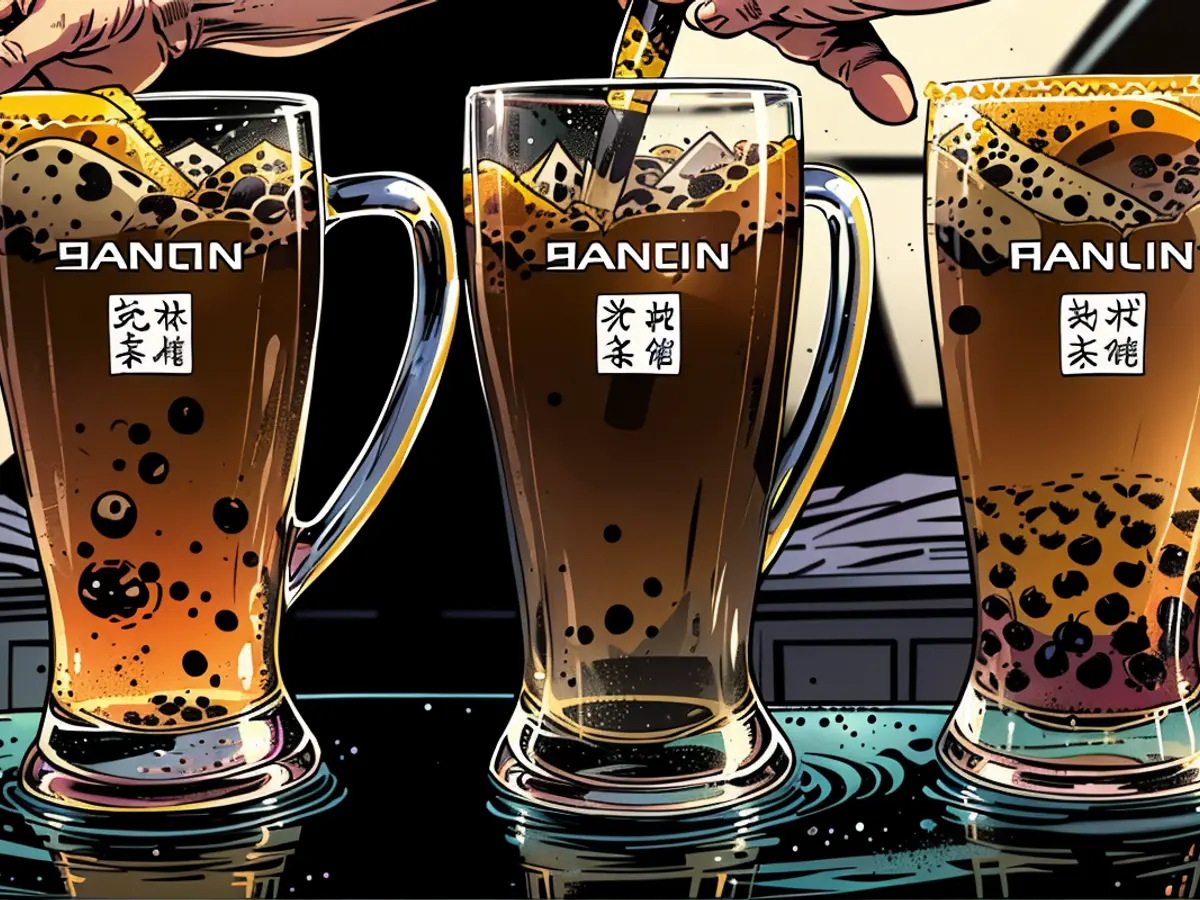The beginnings of bubble tea, a cherished drink popular in Taiwan's culture
Everyone played a part in the surge of bubble tea's popularity, the infamous Taiwanese drink that's swept across the globe recently. Its fame is once again in the limelight, sparked by remarks from Marvel actor Simu Liu, accusing a Canadian drink company of cultural theft.
The episode in question feature a Canadian beverage company on "Dragons’ Den," a program similar to "Shark Tank" from CBC. On the show, the proprietors of a Quebec-based beverage brand described bubble tea as a trendy, sugary drink with unsettling contents, often leaving customers puzzled.
Simu Liu, a Chinese-Canadian guest star and potential investor, stepped in, "Pause, pause. I am certain about its contents," he stated, allowing them to continue before taking on their ambition to "improve" the drink.
The controversy surrounding bubble tea isn't new, with decades of heated debates behind it.
The origins of bubble tea
It was first invented in the 1980s, often referred to as "black pearl tea" or "boba tea." At its heart, it's a blend of tea, milk, and the signature "bubbles" - tiny spheres made from ingredients like tapioca or fruit jelly.
Research has suggested that the bubble tea business may be valued at around $2.4-$3.6 billion globally by 2024, with growth only slowing down in the following decade.
Tracing the roots of bubble tea leads us back to the 1940s.
After serving as a mixologist in a Taiwanese izakaya under Japanese rule during WWII, Chang Fan Shu opened a tea shop in 1949. His unique shou yao (hand-shaken) tea, crafted by hand with cocktail shakers, resulted in an exquisite iced tea replete with fine air bubbles. Dubbed "foam tea" in Taiwan, shou yao is now an integral element of bubble tea.
The concept of cold beverages as a source of entertainment was still novel in post-war Taiwan, and bubble tea's success fueled the country's passion for tasty, chilled beverages.
"Tea beverages thrived as leisure food trends flourished in Taiwan during the 1980s, as the country experienced rapid economic growth," declared Tseng Pin Tsang, a Taiwanese food historian.
"In addition to commercially-produced and bottled teas, there were more tea shops opening up on streets and suburban tea houses."
In 1986, Tu Tsong He, a Taiwanese artist and entrepreneur, sought to revitalize his business by building on the tea shop trend. Following the closure of his hot pot restaurant, he was burdened with a TWD 4 million (approximately $124,000) debt.
Encountering fenyuan (tapioca balls), a childhood favorite, during a visit to the Yamuliao market in Tainan, he wondered, "Why not blend the tapioca balls with my green tea?"
The white fenyuan, when combined with the golden green tea, created an intriguing appearance similar to mother's pearl necklace. The name "pearl green tea" was coined.

Tu expanded on the concept by incorporating larger, black tapioca balls into milk tea for a richer taste and appealing texture, leading to the iconic bubble milk tea that many fans enjoy today.
"The black bubbles were bigger than the available straws at the time," said Tu. "Our customers had to use spoons to retrieve the tapioca balls. We worked with a plastic factory to design straws specifically for our tea."
Tu's inaugural bubble tea shop, Hanlin, opened its doors in October 1986. Its famous tea quickly became a hit in the market, providing Hanlin with a steady income that allowed Tu to clear his debt.
However, Tu wasn't the only individual claiming to have hatched the bubble tea concept. Lin Hsiu Hui, Chun Shui Tang's product manager, claimed to have developed the first glass of bubble milk tea at a staff meeting in 1988.
Simply to amuse her colleagues, she added tapioca balls to her Assam tea and took a sip. The drink was an instant success, surpassing sales of all other iced teas within a couple of months.
Chun Shui Tang staff also claimed to have pioneered foam tea prepared with a cocktail shaker, which added another layer to the bubble tea rivalry.
The contest for bubble tea preeminence grew increasingly heated indeed, culminating in a 10-year legal battle that began in 2009. The dispute finally concluded in 2019 with an unsatisfying yet conciliatory resolution.
The verdict was that anyone could create bubble tea. Therefore, it was unnecessary to dispute who invented it.
"We're aging industry colleagues," Tu remarked in 2020. "The lawsuit with Chun Shui Tang was a necessary battle for truth, but nothing personal. Let the people who drink our tea be the judges."
Though the battle over ownership has no decisive winner, there's one indisputable fascinating fact about bubble tea's history – the origin of its nickname, "boba."
Now synonymous with bubble tea overall, the term "boba" initially referred to the large, dark tapioca balls included in the drink.
Most individuals agree that it was coined by a street vendor in Tainan, inspired by Hong Kong film star Amy Yip's nickname, "Boba," which, when loosely interpreted, translates to "breast champion."
The vendor named the larger dark tapioca balls "boba" to differentiate them from the smaller fenyuan typically found in tea shops.
A Timeless Taiwan Symbol

However, Taiwan's affection for bubble tea extends beyond taste and sensation, as pointed out by historian Tseng.
"It also reflects the unique atmosphere of Taiwan during that era – the sensation that the society was moving from old to new," he said, discussing the late 1980s.
"It embodies some traditional Taiwanese cultural experiences, with a sense of nostalgia pervading this modern society."
As society worked together to recreate two traditional staples – fenyuan and tea – bonding over their shared culture and history, added Tseng.
"Bubble tea is an outstanding example of reimagining a traditional food. It has become a representation of Taiwanese self-confidence and identity."
In other words, disturb Taiwanese and their bubble tea – a lesson the island's Defense Ministry learned the hard way.
In 2004, looking to justify a proposed weapons purchase to the public, the ministry announced that if Taiwanese skipped one bubble tea per week for the next 15 years, they could save enough money to cover the military expense.
The campaign backfired, sparking outrage while uniting bubble tea vendors and drinkers.
Bubble tea chain Easy Way voiced their opposition, saying, "Why don't you ask people to give up Coke instead?"
The incident was famously named the "bubble tea for arms" scandal by local media. Some scholars even claimed it "catapulted bubble tea onto the international stage."
Bubble Tea 2.0
Now, bubble tea continues to evolve, both in taste and texture.
New shops pop up globally, developing their own versions of the drink.
Taiwanese brand Tiger Sugar has ventured into tea-less bubble drinks, using brown sugar-coated bubbles and fresh milk instead.

Younger brands have also experimented with incorporating different ingredients, such as Oreos, strawberries, and sponge cakes, into their offerings.
Traditional bubble tea shops have even joined in on the creativity, expanding their menus.
Successful brands have emerged outside Asia as well.
For example, Bubbleology, one of the earliest chains in the UK, was founded by a former British investment banker. The founder, Assad Khan, revealed in an interview that he fell in love with the drink after trying it in Chinatown in New York in 2009 and opened his first shop in 2011.
"It was a taro bubble tea and it wasn't anything like I'd ever tasted. The texture variation between the tea-based beverage and tapioca balls created a unique hybrid dessert," Khan told CNN Travel about his initial impression of the drink in 2020.
"The best part about bubble tea is its entirely customizable nature – the ability to adjust every aspect of the drink. You won't find this with other offerings in the impulse snack category."
Bubbleology has since expanded beyond the UK to the United States. It has embraced the customizable nature of the drink, offering a diverse range of bubble tea options.
But regardless of how wild the recipe gets, the essence of a good bubble tea remains – the tea.
"We only use top-notch Sri Lankan black tea (grown in Taiwan). It has a smooth aroma and a delightful aftertaste," said Tu, who passed away in 2022 at the age of 73.
As news of his passing spread, many in the tea industry expressed their respects and gratitude for his tireless promotion of Taiwan's tea culture during his lifetime.
In his final interview with CNN, Tu said that searching for the best tea among Taiwan's mountains was his favorite part of the job.
"Bubble tea isn't only the foundation and the pride of Hanlin, it is also the highlight of Taiwan's beverage industry," he said. "It introduces the world to Taiwan. So it is not only important for Hanlin, but Taiwan, too."
Originally published in 2020, this feature was updated and republished in 2024.
After tasting bubble tea in Chinatown, New York, Bubbleology's founder, Assad Khan, was inspired to bring this customizable dessert to the UK, opening his first shop in 2011.
The success of bubble tea breweries has led to new shop openings globally, with brands like Tiger Sugar introducing tea-less bubble drinks and incorporating unique ingredients such as Oreos, strawberries, and sponge cakes.

Read also:
- Fear of escalation in the Middle East: US Secretary of State Blinken travels to the region again
- Government circles: US Secretary of State Blinken to travel to Middle East again
- Bridging days 2024: How you can double your vacation this year
- Germany has wanderlust: how tour operators and airlines are looking ahead to the next travel year








